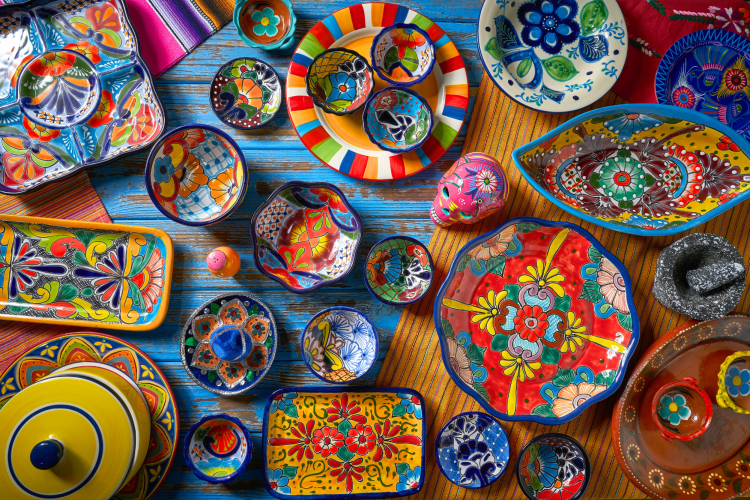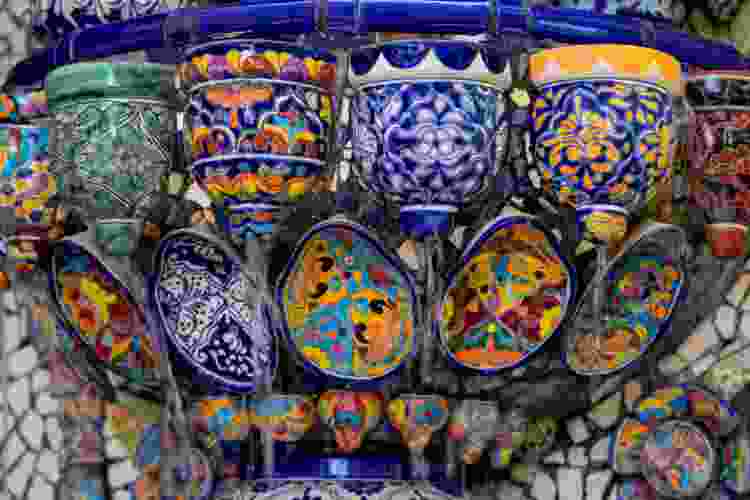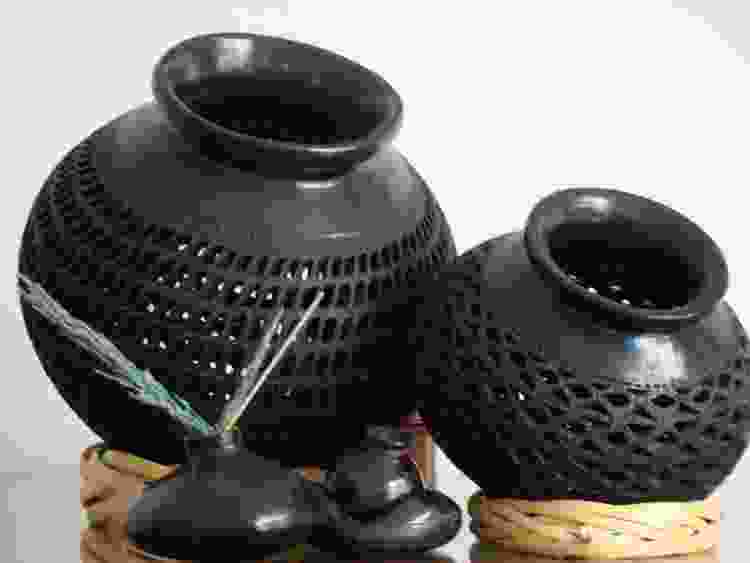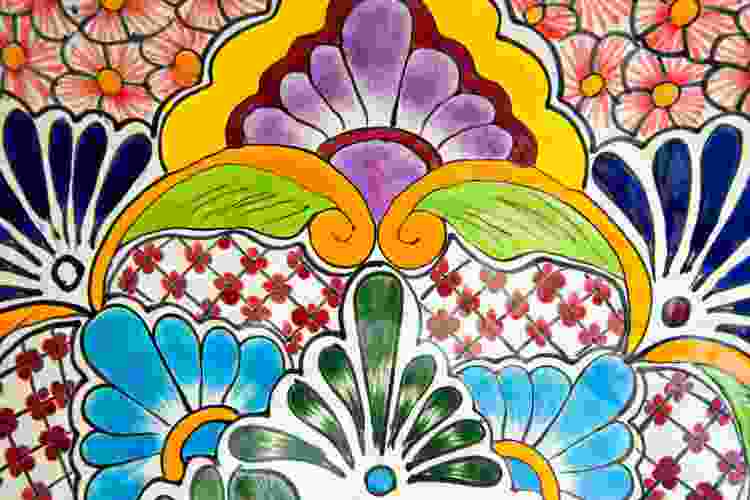Everything You Need to Know About Mexican Pottery in 2025

Mexican pottery is world-renowned for its enchanting beauty. It’s a complex artistic tradition that holds culture, history and pride. Craftspeople have dedicated their lives to mastering the intricate art and keeping the traditions alive.
Now, many people from around the world seek out authentic Mexican pottery to adorn their homes and appreciate its unique beauty.
Each region of Mexico has its own history and culture and this is reflected in the pieces that the regions create. Because of this, there are many different kinds of Mexican pottery, each with its own story.
One of the most famous styles is Talavera, which was originally brought to Spain from the North African Moors in 1492, according to the Library of Congress. This pottery style was brought to Mexico by the Spanish, and the indigenous Mexicans combined it with their own traditions.
Discover all the beauty, history and culture of Mexican pottery. Learn about the different types of pottery from around the region and Mexican pottery facts that make these pieces more interesting.
Jump to Section
- Mexican Pottery History
- Traditional Mexican Pottery Styles
- Fun Mexican Pottery Facts
- Mexican Pottery FAQs
Mexican Pottery History
Ancient Mexican Pottery

Through discoveries in archaeological ruins, experts have found pieces that show that ancient Mexican cultures were proficient in creating pottery. Many pieces were found in the ancient Olmec cities, including Tajin, San Lorenzo, Tres Zapotes and La Venta in particular.
These pieces of Mexican pottery history show that they used clay and took advantage of ancient firing, color and painting techniques. Though the Olmec societies thrived from 1500 BC to 800 AD, their knowledge and techniques of working with clay have been passed down and their influences are still felt.
You can learn the basic techniques that ancient civilizations have perfected during pottery classes in Columbus, pottery classes in NYC and pottery classes in Seattle. Taught by expert local artists, you can learn how to work with clay and learn the techniques that have been built for centuries.
Pottery Over 3,000 Years
The tradition of crafting Mexican pottery has lasted for over 3,000 years, with different groups and regions developing new techniques and uses for their works. For example, the Teotihuacans (100 BC to 800 AD) used stucco and painting in the ceramics they created. However, the Aztecs, from 1325 AD to 1521 AD, used primarily red and orange clay to make earthenware plates, pots and cups.
Though groups existed in different areas at different times, their work was often influenced by their predecessor. The Mimbres culture’s geometric motifs influenced the work of the Casas Grandes culture, who used the influence to create colorful ceramics.
Spanish Introduction and World Influences
When the Spanish arrived in Mexico, they brought their own art style and techniques. Some of these blended with indigenous techniques to create a unique style of its own. One of the most famous examples of this is the Talavera style, which is produced in Puebla but heavily influenced by Northern African and Spanish art.
Another example is in the state of Jalisco, where traditional ceramics are influenced by Persian art and culture. Or in Metepec, where Christian beliefs influence the artistic works.
Antique and Contemporary Mexican Pottery
The art of pottery is centuries old in Mexico and still continues today. Craftspeople in many rural parts of Mexico have preserved the techniques that are native to their region. They often utilize the same or slightly updated versions of the ancient techniques, such as using open firing or natural pigments.
Different states and regions across Mexico have their own history and culture that influence the process from forming and painting to glazing pottery. Each of the differences creates a beautiful story of the region, state and even city. And the pieces are often sought after.
Whether it’s vintage Mexican pottery or made by contemporary artists, it’s a beloved art form that has been and will continue for centuries.
Traditional Mexican Pottery Styles
Talavera Mexican Pottery

Talavera is one of the most well-known traditional Mexican pottery. So, what is Talavera style? Traditionally, it was a Spanish ceramic was a blue and white glaze design that depicted biblical images. Mexican Talavera changed when Mexico claimed independence from Spain.
It has become more colorful, including red, orange, yellow, green and black. It also expanded to show Mexican motifs, such as flowers, animals and Mesoamerican geometric designs. In turn, it became a way of showing off Mexican pottery history.
You can find Mexican Talavera pottery in the form of tiles to decorate your home as well as bowls, plates and pitchers.
Majolica
Majolica is a heavyweight clay pottery originating from Guanajuato. It’s richly colored, painted with ornamental designs and coated with a shiny glaze. It’s named after Majorca, a Spanish island, where the pieces were first created before being introduced to Mexico.
Majolica is shaped by hand on a potter’s wheel before being left to dry for days and then baked at the end of the drying period. It’s rich colors make it a beloved part of a Mexican Pottery vintage collection.
Tlaquepaque Pottery
What is Tlaquepaque pottery? This ceramic style originated in a village in Jalisco from which the art style takes its name. Because of its depiction of landscapes, animals and everyday images, Tlaquepaque is considered a folk art.
The pieces are made of a light brown clay and use white, gray-blue and rose-colored glazes to make the folk art motifs. You can find pieces of this Mexican pottery, such as mugs, bowls, platters, and even animal and human figurines.
Trees of Life
Trees of Life originated in the central region of Mexico, specifically the current Metepec. They’re not produced in many Mexican states of Puebla and Oaxaca. These pieces feature many colorful ceramic figurines placed together.
They often include evangelical elements like animals, fruits, flowers and symbols of biblical passages. However, contemporary potters add elements that represent their community and culture.
Barro Negro

This traditional Mexican pottery comes from Oaxaca and uses black clay. This type of pottery making is unique to the area because this naturally black clay is only found in Oaxaca.
Artisans carve intricate designs into handmade pieces, creating geometric motifs that add depth to the midnight-black vases and bowls. The technique used to create Barro Negro also uses generations-old techniques, including using precise temperatures, which help create the right colors.
Capula Dotted Pottery
From the Mexican state, Michoacán hails Capula dotted pottery. The capital, Morelia, has over 700 artisan workshops that create this traditional work of art. These works of art are colorful and feature intricately placed, delicate dots that create flower-like designs.
Dots can have different thicknesses achieved by different brushes. Since all the designs are handpainted, they are beautiful and painstaking designs that many admire.
Fun Mexican Pottery Facts
Most Pieces Were Handbuilt
One of the most interesting facts about Mexican pottery is that the ancient pieces were mostly hand-built. Hand building pottery uses techniques like molding and coiling rather than throwing clay on a wheel.
This makes the intricacies of ancient works even more impressive. While some contemporary Mexican pottery is now made on a wheel, many artisans still use traditional hand-building techniques.
Oaxacan Clay Is Guarded
Barro negro is from the Mexican state of Oaxaca. This Mexican pottery name, which means black clay, derives from the naturally occurring black clay that’s only found in that region.
The Mexican pottery clay is so valuable that members of the community take turns guarding the clay from those who might exploit it so that the clay remains free to all community members.
Talavera Only Has Six Permitted Colors

Talavera is one of the most well-known forms of Mexican pottery. However, in Spanish Talavera only six colors are permitted to be used to create the intricate designs. These include blue, yellow, black, green, orange and mauve, which must be created with natural pigments.
Mexican Talavera also uses these colors, but it's not as strict. So you can be inspired by a Talavera color scheme for your next pottery painting ideas and create a piece that mimics Mexican pottery.
Pottery Was Used to Tell Stories
Mexican pottery pieces often had a utilitarian use, such as plates or jugs to be used in the kitchen. But they were also often used to tell stories. Both ceramics and pottery depicted religious texts, songs, political events and everyday happenings.
It was a way of passing history down to the next generation. When it comes to ceramics vs pottery, Mexican artisans made both, creating jugs, mugs and statues that represent their culture. You can learn to create both styles with classes made for pottery for beginners.
Mexican Pottery FAQs
What Is Traditional Mexican Pottery Called?
There is not one Mexican pottery name that encompasses all styles. Mexican pottery is vast and unique to different states, regions and cities. Each creates distinct works of art that reflect their culture and history. Many of the contemporary pottery ideas are based on ancient techniques and motifs.
Having said this, there are more popular and well-known styles of Mexican pottery. Talavera Mexican Pottery is probably the most renowned. Originating in the Puebla region in the 16th century, it’s a hand-painted style that many ceramic lovers seek out authentic pieces.
Why Is Talavera So Expensive?
Talavera is a sought-after Mexican pottery and it’s often expensive for a couple of reasons. The works are made from high-quality Mexican pottery clay and only use natural pigments to color their slips.
The designs are also handpainted, which is time-consuming. It takes several months for specialized artisans to create these pieces. The higher cost can also be attributed to the strict technique and quality regulations, as only certain workshops in Puebla create authentic Talavera pottery.
You can be sure you found an authentic one by looking for valuable pottery marks, which are usually the signature of the potter or the workshop’s logo. This helps ensure the higher pricepoint means a quality and authentic piece of Talavera.
You can see the beauty of Mexico’s history and culture through Mexican pottery. Mexican pottery’s vibrant colors and intricate designs have maintained the traditions for centuries. Craftspeople have dedicated their lives to creating intricate and expertly crafted pottery pieces as well as traditional glazing. That’s what makes Mexican pottery so unique. Fill your home with these unique pieces or simply marvel at their beauty.
To learn even more, check out other experiences happening on Classpop!


